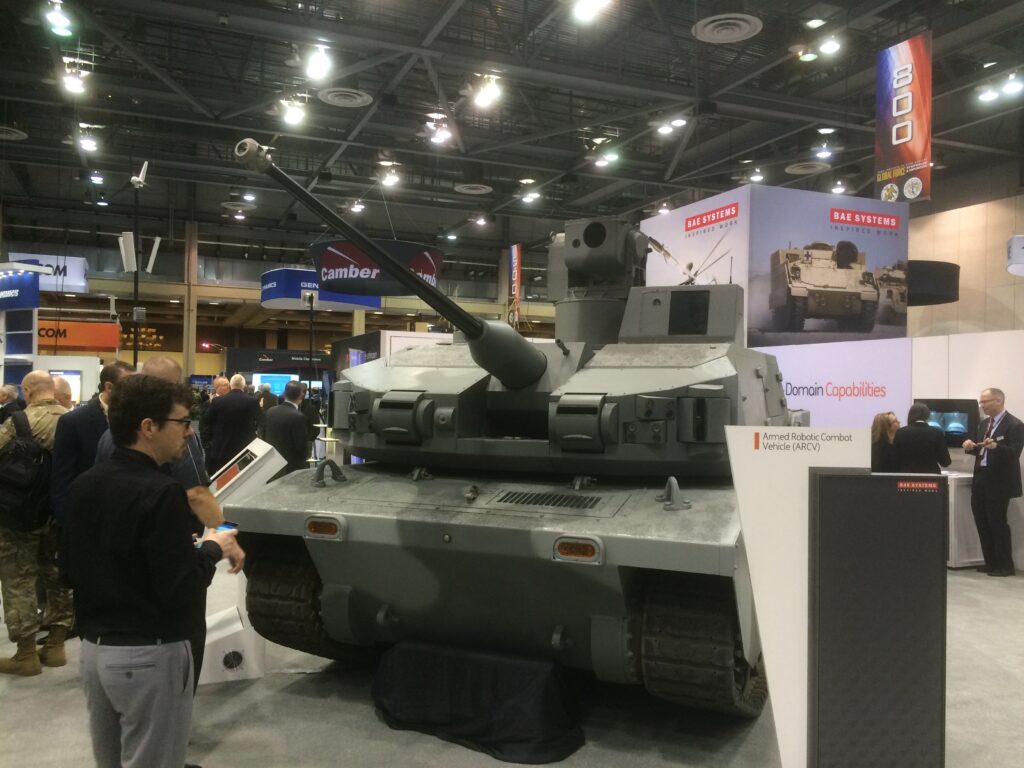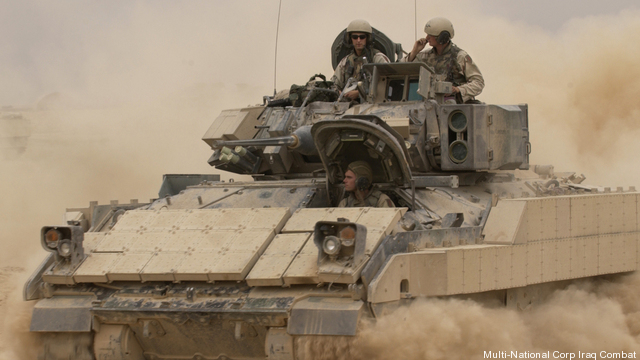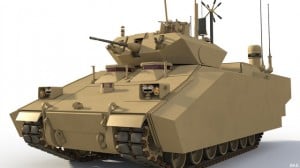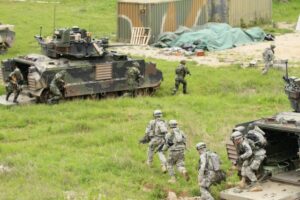Army Pushes Bradley Replacement; Cautious On Armed Robots
Posted on
The Army is accelerating its efforts to replace the M2 Bradley troop carrier while giving itself “a little more time” to develop a Robotic Combat Vehicle, a senior official told reporters. Exact timelines remain “in a state of flux” pending a July meeting with Army leaders, said John Miller, deputy director of the Fort Benning-based Next Generation Combat Vehicle (NGCV) Cross Functional Team. NGCV is No. 2 of the Army’s Big Six modernization priorities.
“Recent guidance from Army senior leadership has us looking at, emphasizing, Bradley replacement,” Miller told reporters in a conference call. “What we have now done is moved to accelerate our optionally manned fighting vehicle, the Bradley replacement, and we want to be able to focus on that.”
 The Army must balance getting a more capable vehicle — which takes longer to develop new technology — with getting a capable-enough vehicle faster, Miller said. “Every time we go and have these reviews, we’re encouraged to go faster,” added Don Sando, head of the Capabilities Development and Integration Directorate (CDID) at Fort Benning, the Army’s training and doctrine center for infantry, scouts, and tank forces. (This sounds suspiciously like the old 80 percent solution!)
The Army must balance getting a more capable vehicle — which takes longer to develop new technology — with getting a capable-enough vehicle faster, Miller said. “Every time we go and have these reviews, we’re encouraged to go faster,” added Don Sando, head of the Capabilities Development and Integration Directorate (CDID) at Fort Benning, the Army’s training and doctrine center for infantry, scouts, and tank forces. (This sounds suspiciously like the old 80 percent solution!)
Why the urgency on the Bradley? Resembling a tank but officially called an Infantry Fighting Vehicle (IFV), the M2 Bradley is a heavily armed and armored transport, designed to carry foot troops through enemy fire in relative safety and to support them with heavy firepower. Repeatedly upgraded since its introduction in 1981, the Bradley is reaching the limits of its ability to handle new electronics, armor, or defense systems. Bradleys in Iraq routinely had to turn off other electronics to get enough power for their anti-roadside-bomb jammers. The Army is now struggling to fit Bradleys with an Active Protection System to shoot down incoming anti-tank warheads, a system the larger M1 Abrams accommodated with relative ease.
Well aware of these limitations, the Army has twice tried and failed to field a new replacement — first the Future Combat System, then the Ground Combat Vehicle — and a new IFV is a top priority for Army Secretary Mark Esper. The Bradley’s NGCV replacement will be “optionally manned” — with humans aboard most of the time but able to conduct limited operations without them.
What about replacing the M1 Abrams heavy tank, something Army Chief of Staff Mark Milley has often mentioned, or, for that matter, the M109 Paladin howitzer? “Right now there are no plans directly to go from NGCV to any other of the platforms,” Sando said. “The first next generation vehicle will be the Bradley replacement. There will be characteristics of that vehicle…. which will extrapolate to other platforms and be added upon as they go forward.”
In other words, there’s no FCS-like concept of a single common chassis with different variants for a troop carrier, a tank, a howitzer, and so on. But the Bradley replacement will pioneer new technologies, such as optional manning, that will probably go on longer-term replacements for the Abrams or Paladin.

BAE’s Armed Robotic Combat Vehicle (ARCV), originally developed for the Future Combat Systems (FCS) program
Experiments With Robots
The Army’s original tentative but ambitious timeline called for development of the optionally manned NGCV and an unmanned Robotic Combat Vehicle (RCV) in parallel, moving through rounds of prototyping, testing, redesign, and re-testing at the same time. Now, said Miller, RCV “will not be tied to fielding with the Bradley replacement. (That gives us) a little bit more time to get operationally mature, a little more time to figure out what we can do with RCV.”
The two vehicles are still complementary, Miller and Sando emphasized. The long-term vision is unmanned RCVs acting as scouts and escorts for manned NGCVs, going first in case of ambush and guarding the flanks against surprise attack. The humans controlling the robots would do so from stations in the back of the NGCVs.
Currently, it takes one human to direct one ground robot, remotely controlling every movement. (Navigating uneven ground and varied obstacles is much harder than flying a drone through empty air). The Army wants to improve artificial intelligence so one human can supervise a squadron of robots.
That will require extensive experimentation with both technology and tactics: how the command links can be secured against hacking and jamming, how self-directing robots can really be, how many a human commander can keep track of at once and how they can expand the space and time the mixed human-machine unit can control.
The Army will run a major experiment this September using combat soldiers and “surrogate” robots to work out tactics, Miller and Sando said. It will hold an industry day in late September or early October, about six weeks after the Army leadership decision expected in July.
There’ll also be a “robotics innovation workshop” for interested parties in October. Industry and academic representatives will be able to observe Army troops conducting field exercises simulating typical tactical tasks — reconnaissance, deliberate attack, tactical resupply, and so on — so they can assess where robotics might be helpful. Details, like so much, are in flux, said Sando: “We just started thinking about this idea this week, so exactly how we’ll do it is work to be done.”
The key is to get new technologies in the hands of young soldiers so they can test them in realistic conditions and try innovative ways to use them. “Clearly, the young men and women who are in our (units) today are much more talented than they were a generation ago, especially in information technology,” Sando said. “We don’t want to overwhelm them with technology, (but) let them be the barometer of that.”
Subscribe to our newsletter
Promotions, new products and sales. Directly to your inbox.



